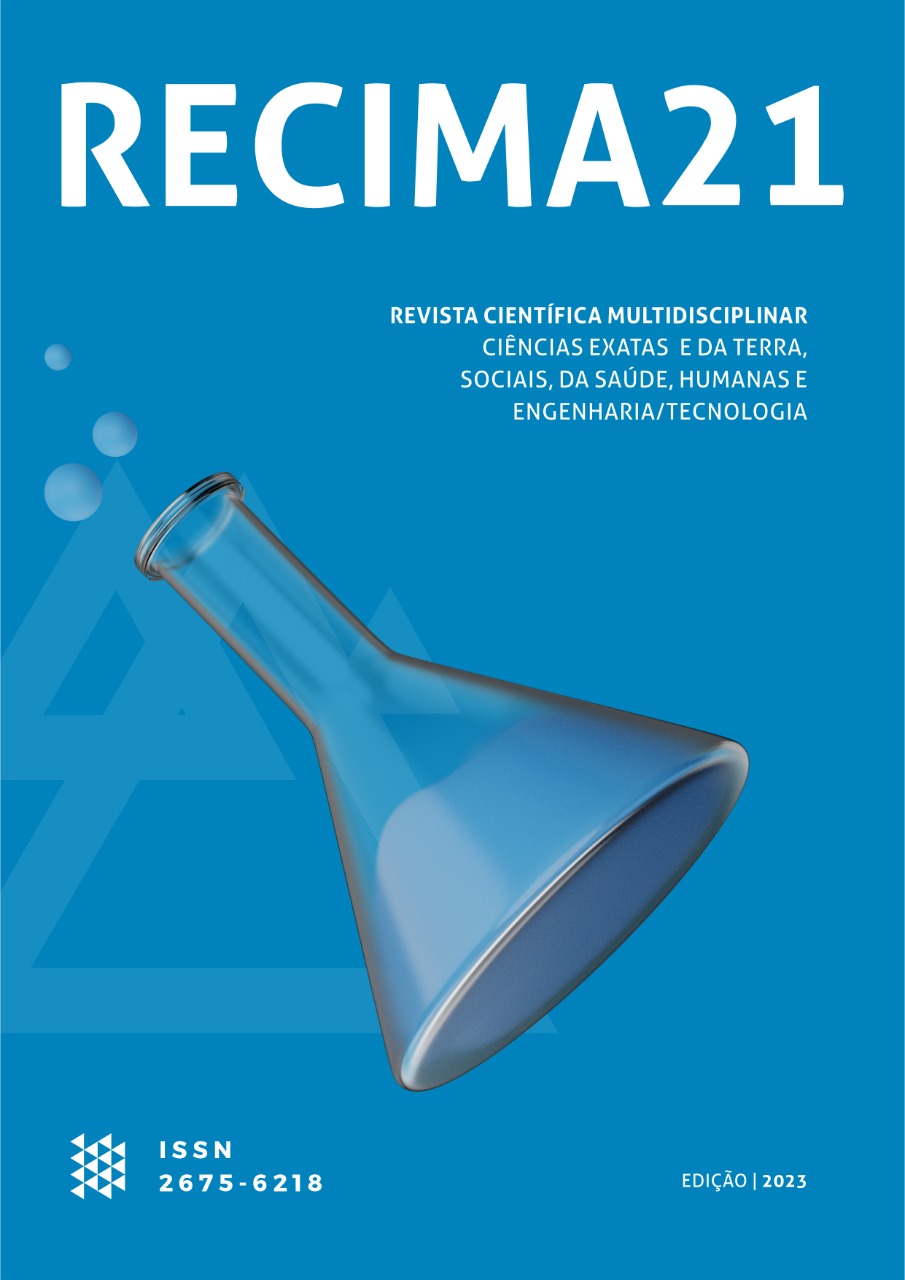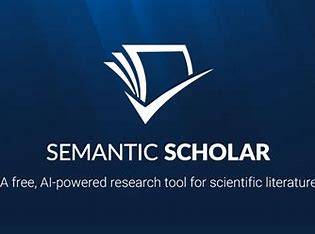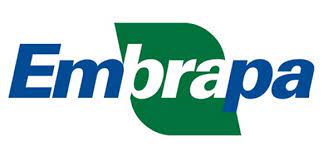PERFIL MICROBIANO ORAL DE PACIENTES TOTALMENTE EDENTULOS CON HISTORIAL DE PERIODONTITIS: UNA REVISIÓN DE ESCOPO
DOI:
https://doi.org/10.47820/recima21.v4i5.3117Palabras clave:
siguiente pregunta: ¿cuál es el perfil microbiano oral de pacientes totalmenteResumen
El objetivo de esta revisión fue responder a la siguiente pregunta: ¿cuál es el perfil microbiano oral de pacientes totalmente edéntulos con antecedentes de periodontitis? Se realizó una revisión del alcance de PRISMA. Se realizaron búsquedas en las bases de datos Medline/pubmed, Cochrane Library y Lilacs mediante una estrategia de búsqueda. Se incluyeron estudios en humanos, con la selección de voluntarios con antecedentes de periodontitis que condujeron a la extracción total de elementos dentales (pacientes totalmente edéntulos), y con muestras de biofilm oral de los dientes antes de la extracción y de cualquier parte de la boca después de la extracción. La información se recopiló de cada estudio y se registró en formas predefinidas. La información de las variables extraídas de los artículos seleccionados fue resumida y presentada cualitativamente, a través de tablas e informada de los resultados alcanzados. Fue posible identificar cuatro estudios que cumplieron los criterios de elegibilidad. El perfil microbiano oral de pacientes totalmente edéntulos con antecedentes de periodontitis que llevaron a la necesidad de extracción dental consiste en periopatógenos (por ejemplo, Aggregatibacter actinomycetemcomitans, Porphyromonas gingivalis y Prevotella intermedia), que permanecen en la cavidad oral incluso después de la extracción dental, pero en concentraciones más bajas. Por lo tanto, es importante que los profesionales dentales realicen tratamientos periodontales efectivos que lleguen a todas las superficies de la cavidad oral en individuos diagnosticados con periodontitis, incluso con la indicación futura de elementos dentales. Porque, incluso frente a la disminución de periopatógenos después de la extracción dental.
Descargas
Citas
REFERÊNCIAS
Morrison, A.G., et al., The Contribution of the Human Oral Microbiome to Oral Disease: A Review. Microorganisms, 2023. 11(2).
Zhang, J.S., C.H. Chu, and O.Y. Yu, Oral Microbiome and Dental Caries Development. Dent J (Basel), 2022. 10(10).
Pozhitkov, A.E., et al., Towards microbiome transplant as a therapy for periodontitis: an exploratory study of periodontitis microbial signature contrasted by oral health, caries and edentulism. BMC Oral Health, 2015. 15: p. 125.
Andjelkovic, M., et al., Does the Prevalence of Periodontal Pathogens Change in Elderly Edentulous Patients after Complete Denture Treatment? J Prosthodont, 2017. 26(5): p. 364-369.
Gazdeck, R.K., et al., Diversity of the oral microbiome between dentate and edentulous individuals. Oral Dis, 2019. 25(3): p. 911-918.
Quirynen, M. and N. Van Assche, Microbial changes after full-mouth tooth extraction, followed by 2-stage implant placement. J Clin Periodontol, 2011. 38(6): p. 581-9.
Tripodakis, A.P. and M. Nakou, Microbiologic evaluation of compromised periodontal sites before and after immediate intrasocket implant placement. Int J Periodontics Restorative Dent, 2011. 31(6): p. e109-17.
Feres, M., et al., Did Omics change periodontal therapy? Periodontol 2000, 2021. 85(1): p. 182-209.
Teles, R., et al., Lessons learned and unlearned in periodontal microbiology. Periodontol 2000, 2013. 62(1): p. 95-162.
Löe, H., et al., Natural history of periodontal disease in man. Rapid, moderate and no loss of attachment in Sri Lankan laborers 14 to 46 years of age. J Clin Periodontol, 1986. 13(5): p. 431-45.
Berglundh, T., et al., Peri-implant diseases and conditions: Consensus report of workgroup 4 of the 2017 World Workshop on the Classification of Periodontal and Peri-Implant Diseases and Conditions. J Clin Periodontol, 2018. 45 Suppl 20: p. S286-s291.
Tonetti, M.S., H. Greenwell, and K.S. Kornman, Staging and grading of periodontitis: Framework and proposal of a new classification and case definition. J Clin Periodontol, 2018. 45 Suppl 20: p. S149-s161.
Mombelli, A., et al., The microbiota of osseointegrated implants in patients with a history of periodontal disease. J Clin Periodontol, 1995. 22(2): p. 124-30.
Lang, N.P. and P.M. Bartold, Periodontal health. J Clin Periodontol, 2018. 45 Suppl 20: p. S9-s16.
Heitz-Mayfield, L.J.A. and G.E. Salvi, Peri-implant mucositis. J Periodontol, 2018. 89 Suppl 1: p. S257-s266.
Schwarz, F., et al., Peri-implantitis. J Clin Periodontol, 2018. 45 Suppl 20: p. S246-s266.
Heuer, W., et al., Analysis of early biofilm formation on oral implants in man. J Oral Rehabil, 2007. 34(5): p. 377-82.
Pongnarisorn, N.J., et al., Inflammation associated with implants with different surface types. Clin Oral Implants Res, 2007. 18(1): p. 114-25.
Retamal-Valdes, B., et al., Does subgingival bacterial colonization differ between implants and teeth? A systematic review. Braz Oral Res, 2019. 33(suppl 1): p. e064.
Koka, S., et al., Microbial colonization of dental implants in partially edentulous subjects. J Prosthet Dent, 1993. 70(2): p. 141-4.
Smedberg, J.I., C.B. Beck, and G. Embery, Glycosaminoglycans in peri-implant sulcus fluid from implants supporting fixed or removable prostheses. Clin Oral Implants Res, 1993. 4(3): p. 137-43.
Danser, M.M., A.J. van Winkelhoff, and U. van der Velden, Periodontal bacteria colonizing oral mucous membranes in edentulous patients wearing dental implants. J Periodontol, 1997. 68(3): p. 209-16.
Apse, P., et al., Microbiota and crevicular fluid collagenase activity in the osseointegrated dental implant sulcus: a comparison of sites in edentulous and partially edentulous patients. J Periodontal Res, 1989. 24(2): p. 96-105.
Tricco, A.C., et al., PRISMA Extension for Scoping Reviews (PRISMA-ScR): Checklist and Explanation. Ann Intern Med, 2018. 169(7): p. 467-473.
Van Assche, N., et al., Do periodontopathogens disappear after full-mouth tooth extraction? J Clin Periodontol, 2009. 36(12): p. 1043-7.
Danser, M.M., et al., Short-term effect of full-mouth extraction on periodontal pathogens colonizing the oral mucous membranes. J Clin Periodontol, 1994. 21(7): p. 484-9.
de Waal, Y.C., et al., Changes in oral microflora after full-mouth tooth extraction: a prospective cohort study. J Clin Periodontol, 2014. 41(10): p. 981-9.
Descargas
Publicado
Cómo citar
Número
Sección
Categorías
Licencia
Derechos de autor 2023 RECIMA21 - Revista Científica Multidisciplinar - ISSN 2675-6218

Esta obra está bajo una licencia internacional Creative Commons Atribución 4.0.
Os direitos autorais dos artigos/resenhas/TCCs publicados pertecem à revista RECIMA21, e seguem o padrão Creative Commons (CC BY 4.0), permitindo a cópia ou reprodução, desde que cite a fonte e respeite os direitos dos autores e contenham menção aos mesmos nos créditos. Toda e qualquer obra publicada na revista, seu conteúdo é de responsabilidade dos autores, cabendo a RECIMA21 apenas ser o veículo de divulgação, seguindo os padrões nacionais e internacionais de publicação.

 Clique para ver detalhes
Clique para ver detalhes 











